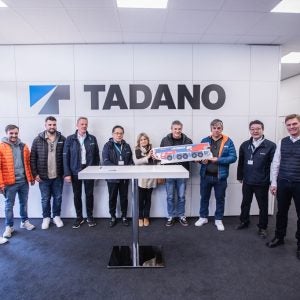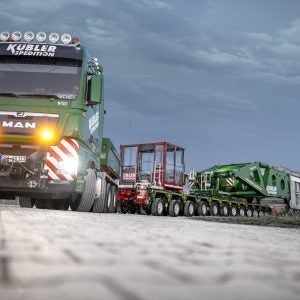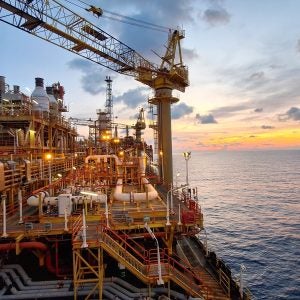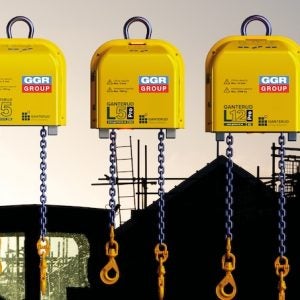Evolution TK27 represents the new rotation-resistant long lay rope for the extreme demands of mobile, crawler and tower cranes. In order to guarantee operational safety and reliability the Evolution TK27 provides the highest minimum breaking forces in rope grade 1960 which can be achieved through the innovative rope design, using strand compaction and 18 external strands.
In addition, the high-performance steel wire rope features excellent torsional behaviour in case of large lifting heights and high loads. This is obtained by the wellbalanced rope design.
Helen Leitner, head of marketing says: "Due to the compaction technology Superfill, this steel wire rope features significantly higher breaking forces as well as a longer service life on account of the lower specific load. "The smooth rope surface results in a substantially lower wear of the rope and the sheaves. Last but not least, the high-performance steel wire rope Evolution TK27 is convincing due to its extraordinary flexibility."
Evolution P9 has been designed to achieve a high-performance steel wire rope which is suited as boom hoist rope in crawler cranes. It is an extremely robust 9- strand ordinary lay rope in double parallel lay design excellently bearing up to the extremely high loads in multi-layer spooling, especially in the first layers on the drum, Leitner says. The reason for this is the rope’s extremely high dimensional stability under lateral pressure and its stability against crushing.
In the new Evolution P9, Teufelberger has used Duofill, a technology featuring optimum compaction of the strands and the rope to obtain higher breaking forces in use.
The ropes are compacted gently, bringing longer service life in multilayer applications and an improved resistance to crushing and a reliable indication of the steel wire rope’s point of discard, as well.
Leitner says that Evolution P9 has already been successfully employed in crawler cranes of renowned crane manufacturers.
In order to satisfy the demand for cranes featuring increasing lifting heights and top load capacities calls for new approaches regarding the ropes installed in cranes, the company has designed a new fibre rope.
The high-strength crane fibre rope soLITE offers the consistent determination of the point of discard, low wear in multi-layer winding systems, in addition to a long service life at a high number of bending cycles for ropes used in cranes.
The discard state of steel wire ropes can be identified by damaged wires, changes in diameter, corrosion and other parameters.
This crane rope features a kernmantle design: the cover protects the load-bearing core and it is simultaneously a significant indicator for the discard state of the fibre rope.
The cover consists of different hightech fibres wearing at different times, so that the point of discard can be determined reliably by visual inspection. Due to the use of three different fibres soLITE has a three-stage advance warning system.
In order to identify when the rope has to be exchanged, the combination of significant visual indicators and an integrated condition monitoring in the core ensuring the electronic determination of the point of discard makes it possible for the crane operator.
Leitner says: "The soLITE fibre has passed numerous practical tests, for example 92 different rope designs were tested, more than 160 breaking load tests were performed."
With regards to the composite solutions, carbon fibre and glass fibre reinforced plastics are used to manufacture highly stressed struts (up to 60 tons), sections and beams for machine frame elements, cardan shafts, hydraulic cylinder components and even whole lattice boom structures. A CFRP lattice boom structure of 3 m will be presented at stand C4.151.
Leitner says: "Composite components show high stiffness and strength and are up to 60% lighter compared to structural steel elements.
"Teufelberger reduces the usually high raw material and manufacturing costs by using different fibre materials with a view to optimizing loads and by applying state-of-the-art manufacturing technologies. A cost factor of 4 at a weight reduction of 50% compared to steel has already been achieved". In order to transfer loads into the fibre composite and to connect the composite components to the metal parts of the construction machine, the company uses the patented T-IGEL technology, avoiding the high costs and quality problems of conventional adhesive connections.






